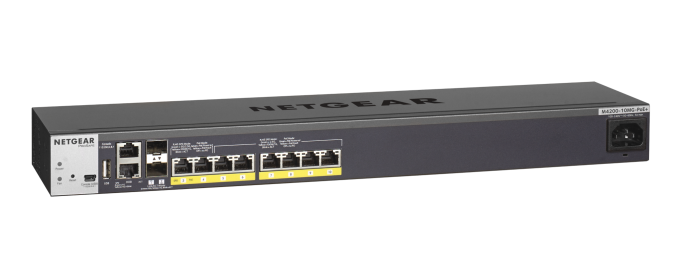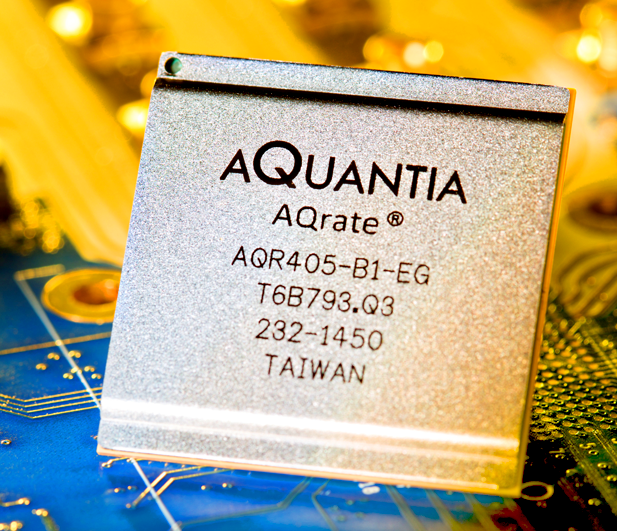NBASE-T Alliance Receives Boost with IEEE P802.3bz Approval for 2.5G/5G Ethernet
by Ganesh T S on October 3, 2016 8:00 AM EST- Posted in
- Networking
- 10GBase-T
- NBASE-T

Wired networks relying on traditional Cat 5e and Cat 6 cables (at their maximum channel length of 100m) have been limited to 1 Gbps so far. At the other end of the spectrum, 10 Gbps required augmented cables (Cat 6A or better) for transmission lengths typical in enterprise and business scenarios. Despite 10 Gbps Ethernet having been around for more than 10 years now, cost and power consumption aspects have limited its adoption on a wider basis. The NBASE-T Alliance was created to bring in support for speeds between 1 and 10 Gbps, while retaining the use of existing cabling infrastructure.
NBASE-T has become popular because it can act as an effective wired backhaul for 802.11ac wireless access points. With theoretical speeds exceeding 1 Gbps, the time and environment are right for technology that can replace the existing 1 Gbps network ports. 10GBASE-T is not really an effective solution because of the cost as well as power requirements aspect. Almost all enterprise access points are powered using Power over Ethernet (PoE). The IEEE 802.3af-2003 standard allows for up to 15.4 W (12.95 W assured), while PoE+ (IEEE 802.3at-2009) can provide up to 25.5 W. However, the 10GBASE-T standard doesn't currently support Power over Ethernet, even though it is being considered. Therefore, 10GBASE-T has not turned out to be an effective and universal solution to this challenge despite the bandwidth availability. This is where the 2.5 Gbps and 5 Gbps options provided by NBASE-T equipment become attractive. Some NBASE-T switches already implement PoE / PoE+, and are effective solutions for driving compatible 802.11ac wireless access points.
Netgear's M4200-10MG-PoE+ Managed Intelligent Edge Series Switch with 5G/2.5G Switching for High-Speed Wave 2 802.11ac Deployments
On September 23, 2016, the IEEE P 802.3bz 2.4G/5GBASE-T Task Force (which started work in March 2015) ratified the IEEE P802.3bz Standard for Ethernet Amendment: Media Access Control Parameters, Physical Layers and Management Parameters for 2.5 Gb/s and 5 Gb/s Operation. It allows 2.5 Gbps operation over standard Cat 5e cables, 5 Gbps over Cat 6, and 5 Gbps over Cat 5e under select conditions. All of these are up to at least 100m channel lengths.
The AQrate Family of NBASE-T PHYs from AQUANTIA - One of the Leading Market Players
The ratification is a big boost for the NBASE-T Alliance. The standardization also lends more credence to the NBASE-T plugfests scheduled to be conducted in October 2016. It will also bring more 2.5G/5GBASE-T products into the market, bring prices down and drive up adoption. The most important aspect is that the existing cabling infrastructure doesn't need a overhaul. This makes it very attractive for business and enterprise users.
From a power user / enthusiast viewpoint, NBASE-T equipment will be a good upgrade. However, readers planning on wiring up their homes would do well to go with Cat 6a cables for future-proofing purposes. 10GBASE-T products (both switches and motherboards / PCIe cards) for enthusiasts are already in the market, thanks to vendors like Asus. NBASE-T adoption will mainly be dictated by business and enterprise users in the near future. As local bandwidth requirements increase in the premises of the average consumer, 2.5G/5GBASE-T will surely find its way into networking gear for traditional consumers also.
Source: NBASE-T Alliance












37 Comments
View All Comments
markhahn - Monday, October 3, 2016 - link
most things that can live on the minimal power provided by POE are not fast enough to drive 10Gb.zodiacfml - Thursday, October 6, 2016 - link
Right. The most powerful PoE standard barely has power for the 10 Gb ethernet interface itself.boeush - Monday, October 3, 2016 - link
Is there any talk yet, and/or should there be at this point, about finally ditching metal wiring for signal transmission, and moving on to optical fiber for consumer/business networks? (A single cable can still include copper wires for power transfer, alongside an optical fiber for data transfer...)With optical cables there's no worry about EMI/crosstalk/noise, the distance limits are at least an order of magnitude greater, the signal travels faster, and bandwidth can scale into Tbps (more limited by transceiver technology than by the cable itself.)
Fiber optics have been around for a long time now. Lots of R&D has been done on silicon photonics for SLI/scaling/cost reduction. How close are we to finally making the leap?
boeush - Monday, October 3, 2016 - link
Gah.. SLI should have been LSI; sorry and here's another forlorn call for an editing function on these posts.Communism - Monday, October 3, 2016 - link
Considering 10 GbE is already priced out of most solutions, going fiber is a pretty laughable suggestion.The problem is always price, every other problem about all of this is secondary.
Hell, at the snail pace we're going, it's probably going to be cheaper to network in coax with DOCSIS 3.1 modems within a year than 10 GbE at this point.
DanNeely - Monday, October 3, 2016 - link
At the consumer end I think a major problem has always been that fiber is a lot less abuse tolerant than twisted pair. You can wad the latter up into a bundle with tight 180* bends, drop heavy stuff on it, and roll over it with a chair without any lasting harm. Glass is much more likely to shatter in those circumstances.boeush - Monday, October 3, 2016 - link
After some digging, I found this:https://www.hpcwire.com/2016/08/18/intel-launches-...
(weird: don't recall reading about it in this year's IDF coverage - probably just poor memory on my part.)
Anyway, the upshot is we have first-gen silicon photonics interconnect fabric for data centers out as of today, basically (give or take a couple months.). That might mean were looking at consumer-level availability/affordability in maybe 10 years or so...
Of course, that would be predicated on a well-established standard. Considering how long *that* normally takes, perhaps now would be a good time to start working on one...
Jaybus - Wednesday, October 5, 2016 - link
Yes. Intel has been working on this for some time. Thunderbolt ("light peak") was originally targeted for an optical interconnect, but the silicon photonics was just not there yet. Etching optical components (lenses, wave guides, and such) in Si has been possible for some time, but indirect band gap material such as Si and Ge are not suitable as laser mediums. That is why LEDs and laser dioides are made of direct band gap materials like GaAs and InAs. Intel has found a way to embed InP, also a direc band gap material, and so has the first on-chip laser. There is huge potential in this, since it is likely possible to have a normal CMOS SoC sandwiched beneath a photonic layer. This implies much more than an on-chip optical networking PHY. Think chip-to-chip interconnect between CPU and RAM or core-to-core.cm2187 - Monday, October 3, 2016 - link
That's fine but the obstacle is not so much the cable than the cost of switches, NIC and routers capable of pumping 10Gbit on multiple ports.Also for a home usage, already many laptops don't have an RJ45 port. I don't think any has an optical port. Same for motherboard. Unless you are happy to scarify a precious PCIe port that you could use otherwise for some NVMe SSDs.
boeush - Monday, October 3, 2016 - link
Good point, there. Though, how much more bandwidth can be squeezed from wireless hubs? OK, maybe we'll all be on gigabit WiFi in few years - but I'm skeptical about 10-Gb, never mind 100+ Gb - particularly in dense urban environments with lots of devices splitting the spectrum and interfering with each other.As to what could possibly require that much bandwidth (outside of a data center or a supercomputer) - well, maybe 16K stereo-VR in 16-bpc HDR at 150 FPS, for example...